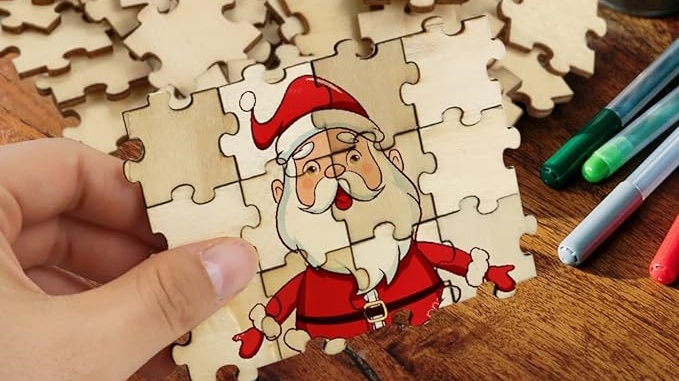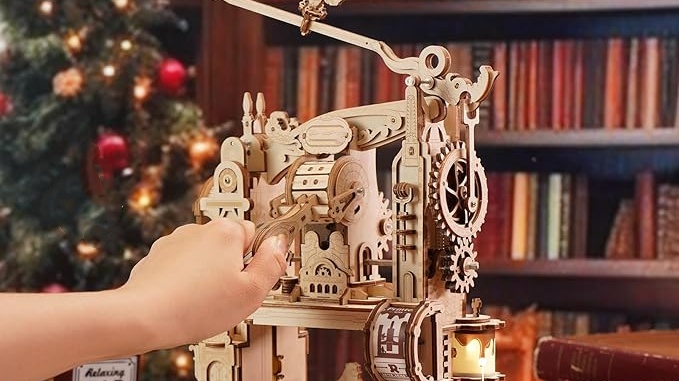
How To Add Storylines To Your Wooden Jigsaw Puzzle: A Creative Guide
Imagine a wooden jigsaw puzzle where each piece is more than a part of an image; it’s a chapter in a captivating story waiting to

Embark on a journey to unravel the nuanced distinctions between two beloved genres of puzzles: plain wooden puzzles and 3d wooden puzzles.
In this comprehensive exploration, we’ll delve into every aspect of these wooden wonders, guiding you towards making an informed decision for your next puzzling endeavor.
Intrigued by the allure of plain wooden puzzles? Let’s delve into their features, advantages, and disadvantages to understand why they remain a staple in the world of puzzling.

Ready to explore the captivating world of 3D wooden puzzles? Let’s delve into their features, advantages, and potential drawbacks to understand what sets them apart.

Curious about how plain and 3D wooden puzzles stack up against each other? Let’s dive into a detailed comparison of their user-friendliness, educational value, pricing, and accessibility.
When it comes to user-friendliness, plain wooden puzzles have the edge. Their simplicity and intuitive designs make them accessible to puzzlers of all ages and skill levels.
Whether you’re a seasoned enthusiast or a young child just starting out, plain wooden puzzles offer a satisfying puzzling experience that anyone can enjoy.
On the other hand, 3D wooden puzzles may require more patience and spatial reasoning skills, making them better suited for experienced puzzlers or those seeking a more challenging experience.
Both plain and 3D wooden puzzles offer significant educational benefits, albeit in different ways.
Plain puzzles are excellent for developing basic cognitive skills such as hand-eye coordination, pattern recognition, and problem-solving.
They provide a hands-on learning experience that encourages exploration and discovery, making them ideal for children and adults alike.
In contrast, 3D puzzles foster spatial intelligence and three-dimensional thinking, challenging puzzlers to visualize and manipulate complex shapes and structures.
They encourage critical thinking and problem-solving skills, making them a valuable educational tool for students and adults seeking to sharpen their minds.
In terms of price and accessibility, plain wooden puzzles are often more affordable and widely available than their 3D counterparts.
They come in a variety of sizes, shapes, and designs to suit every budget and preference, making them accessible to puzzlers of all backgrounds.
Plain puzzles are also easy to find online and in stores, with many retailers offering a wide selection of options to choose from.
In contrast, 3D wooden puzzles tend to be more expensive due to their intricate designs and complex assembly process.
They may also be harder to find, particularly for niche or specialized models. However, the investment is often worth it for the unique and immersive puzzling experience they provide.
When it comes to enjoying wooden puzzles to the fullest, here are some suggestions and tips to enhance your puzzling experience:

In conclusion, whether you’re drawn to the simplicity of plain wooden puzzles or the intricate challenge of 3D wooden puzzles, there’s no denying the endless enjoyment they offer to puzzle enthusiasts of all ages. Each type has its unique features, advantages, and potential drawbacks, catering to different preferences and skill levels.
Ultimately, the choice between plain and 3D wooden puzzles boils down to personal preference and the type of puzzling experience you seek. If you’re looking for a straightforward and accessible puzzle that offers relaxation and cognitive benefits, a plain wooden puzzle may be the perfect choice.
On the other hand, if you crave a more immersive and challenging puzzling experience that stimulates spatial reasoning and creativity, a 3D wooden puzzle could be the ideal option.
Whichever path you choose, remember to savor the journey of assembling each piece, appreciate the craftsmanship behind the puzzles, and enjoy the sense of accomplishment when the final picture comes together. Happy puzzling!


Imagine a wooden jigsaw puzzle where each piece is more than a part of an image; it’s a chapter in a captivating story waiting to

When choosing the right puzzle box(wooden puzzle boxes or paper one) for your toddler, it’s essential to consider the materials’ properties and how they align

Imagine your wooden jigsaw puzzle not just as a piece to be solved but as an interactive journey that engages all your senses. This guide

In the enchanting world of puzzle assembly, the choice of storage can be as personal and complex as the puzzles themselves. Wooden puzzle boxes whisper

Imagine a wooden jigsaw puzzle where each piece is more than a part of an image; it’s a chapter in a captivating story waiting to

When choosing the right puzzle box(wooden puzzle boxes or paper one) for your toddler, it’s essential to consider the materials’ properties and how they align

Embark on a journey to unravel the nuanced distinctions between two beloved genres of puzzles: plain wooden puzzles and 3d wooden puzzles. In this comprehensive

Imagine your wooden jigsaw puzzle not just as a piece to be solved but as an interactive journey that engages all your senses. This guide
Copyright © 2024 woodcraft3dpuzzles. All Rights Reserved.